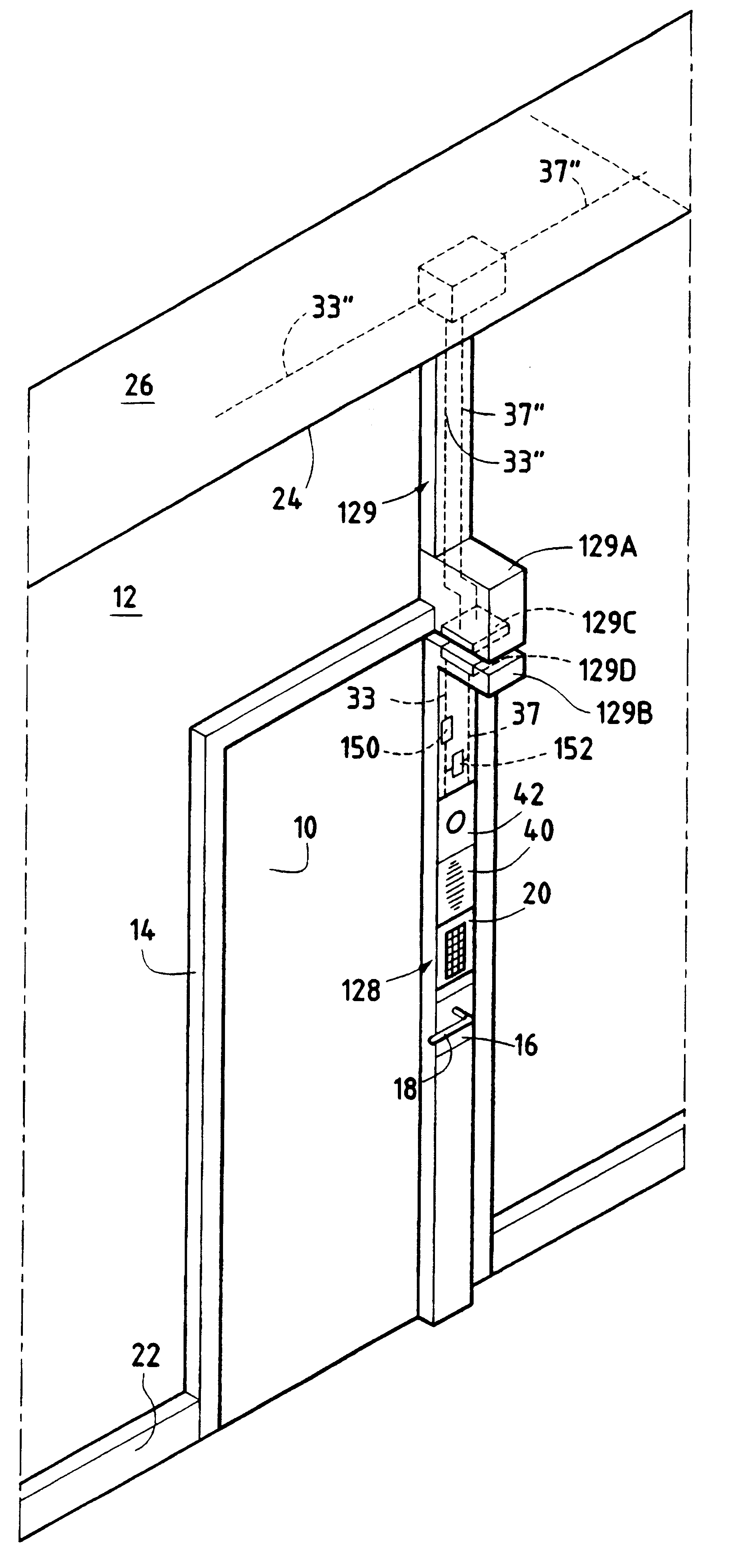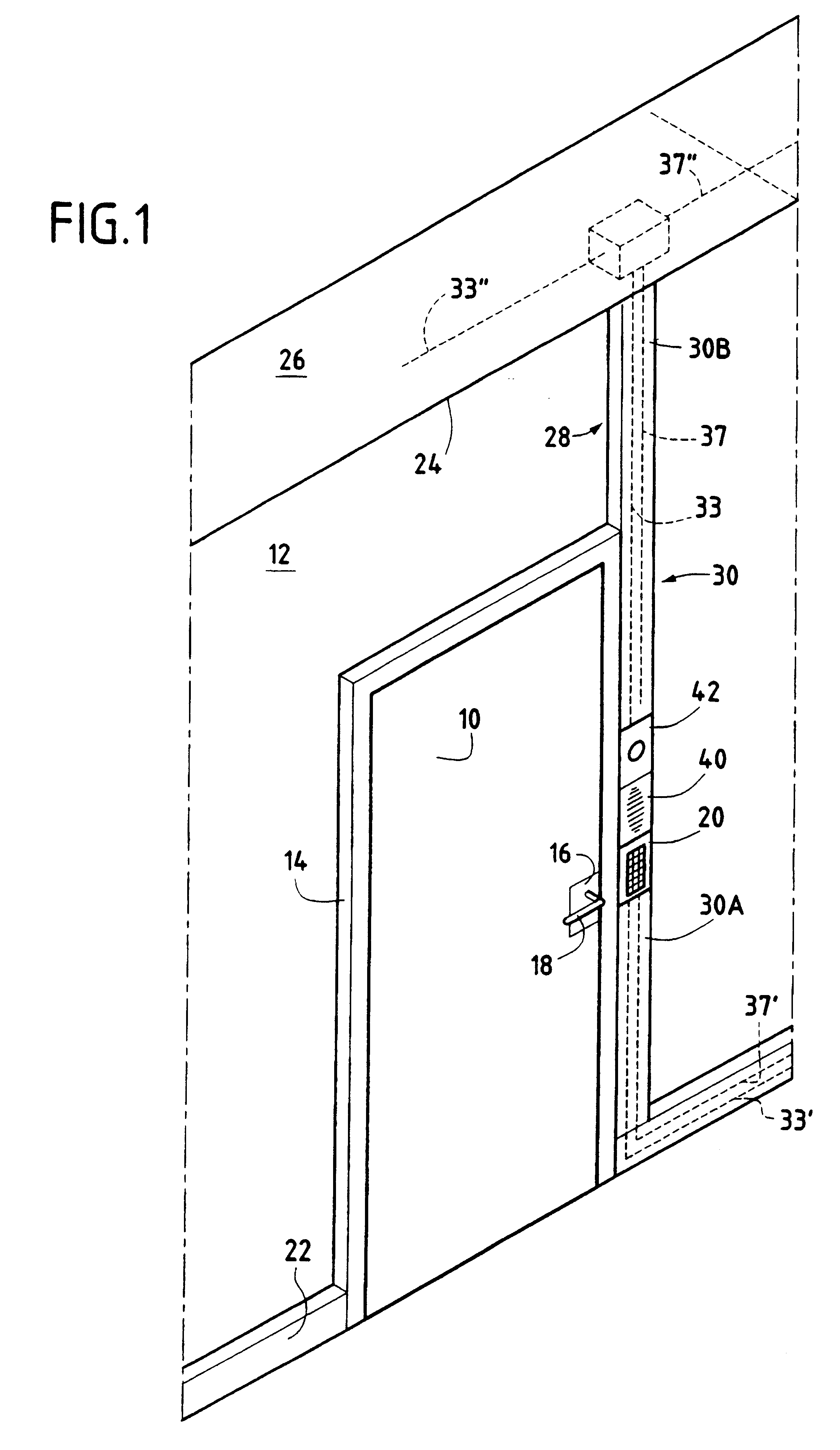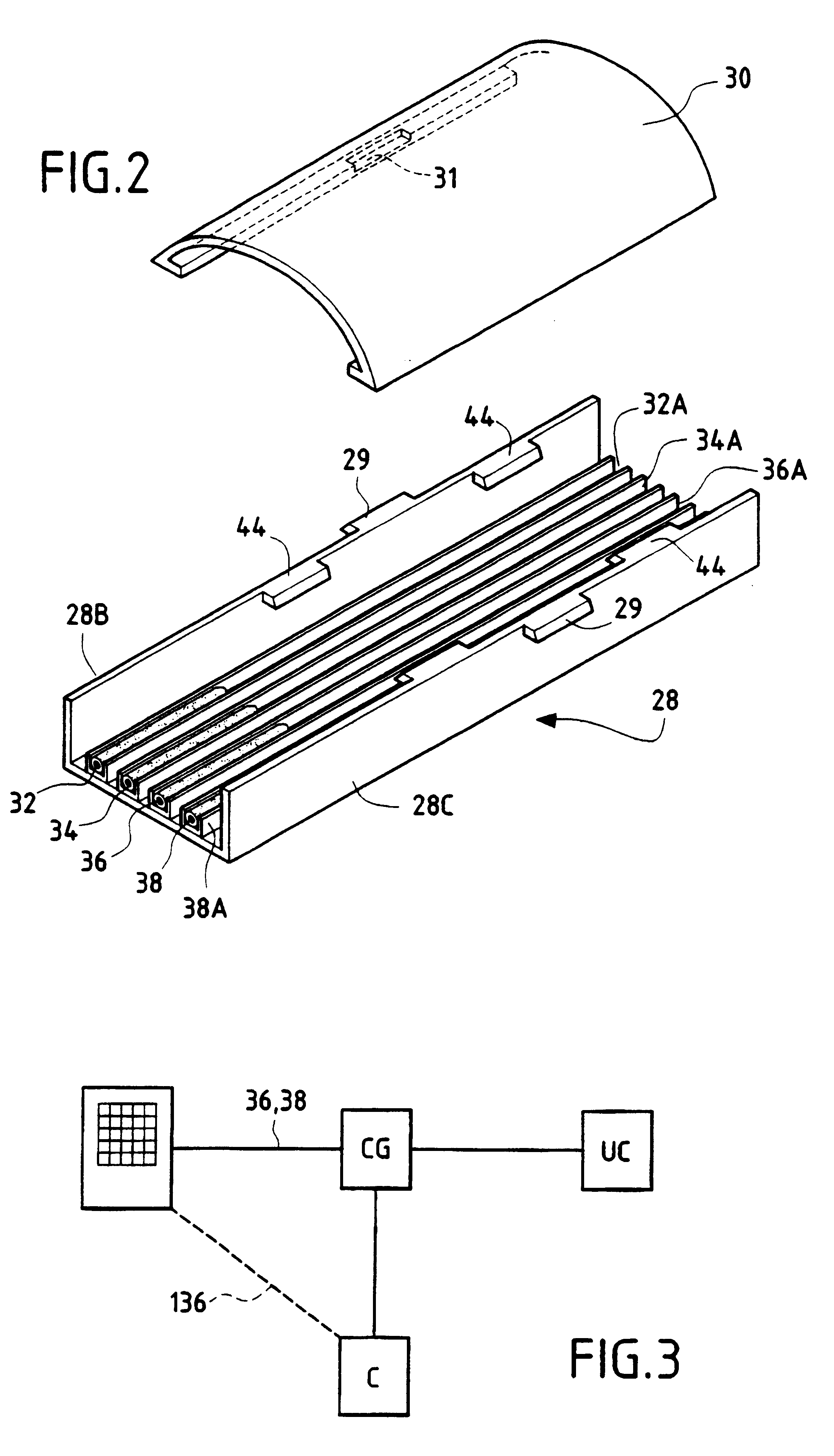Apparatus for controlling the opening of a door
- Summary
- Abstract
- Description
- Claims
- Application Information
AI Technical Summary
Benefits of technology
Problems solved by technology
Method used
Image
Examples
Embodiment Construction
FIG. 1 shows a door 10 fitted in a partition 12. The door 10 and its jamb 14 are fitted with a lock, with only an external portion fitted to the door being shown diagrammatically in FIG. 1 where it is referenced 16, the lock being controllable to open or close the door. The lock can be fitted with a handle 18 which, when access to the premises protected by said door is authorized, can be actuated to open the door. Conventionally, the lock has a bolt secured to the door while the jamb has a striker plate with which the bolt can co-operate. The portion of the lock that is secured to the jamb 14 has a striker plate that can be fixed or that can have a moving element.
Thus, the fact that access is authorized can give rise to the release of means for blocking a moving bolt, thereby allowing the door to be opened merely by being pushed against. It may also give rise to the release of bolt-blocking means enabling the bolt to be actuated by pushing against the door or by turning the handle 1...
PUM
 Login to View More
Login to View More Abstract
Description
Claims
Application Information
 Login to View More
Login to View More - R&D
- Intellectual Property
- Life Sciences
- Materials
- Tech Scout
- Unparalleled Data Quality
- Higher Quality Content
- 60% Fewer Hallucinations
Browse by: Latest US Patents, China's latest patents, Technical Efficacy Thesaurus, Application Domain, Technology Topic, Popular Technical Reports.
© 2025 PatSnap. All rights reserved.Legal|Privacy policy|Modern Slavery Act Transparency Statement|Sitemap|About US| Contact US: help@patsnap.com



